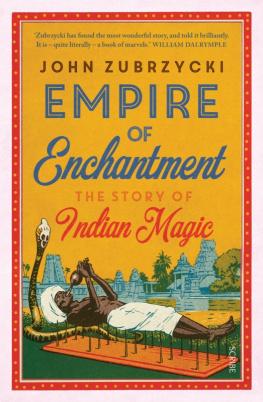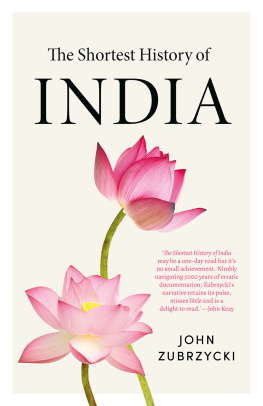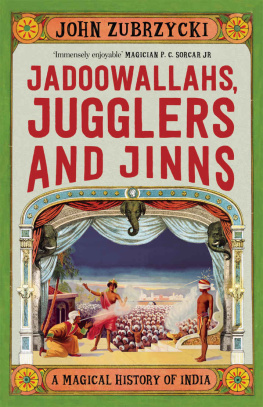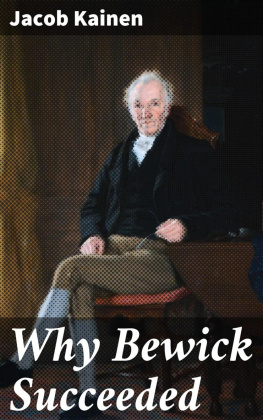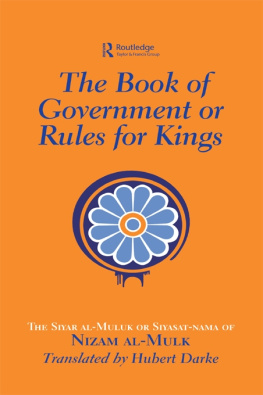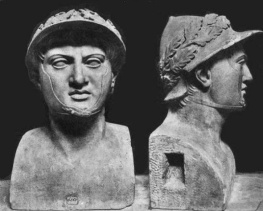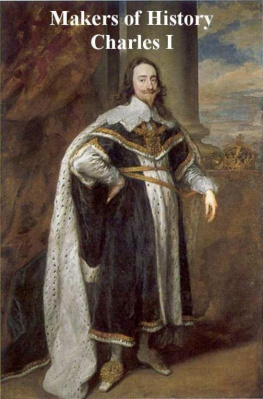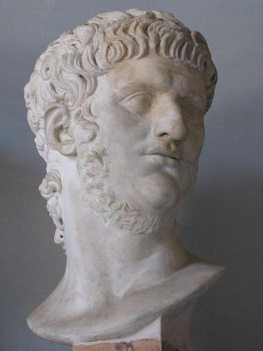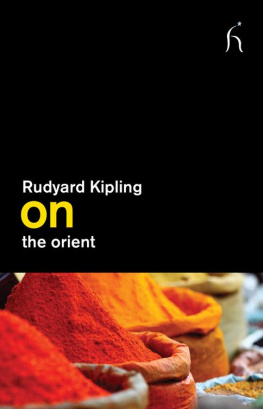


RANDOM HOUSE INDIA
Published by Random House India in 2012
Copyright John Zubrzycki 2012
Random House Publishers India Private Limited
Windsor IT Park, 7th Floor, Tower-B
A-1, Sector-125, Noida-201301, U.P.
Random House Group Limited
20 Vauxhall Bridge Road
London SW1V 2SA
United Kingdom
This eBook is copyright material and must not be copied, reproduced, transferred, distributed, leased, licensed or publicly performed or used in any way except as specifically permitted in writing by the publishers, as allowed under the terms and conditions under which it was purchased or as strictly permitted by applicable copyright law. Any unauthorised distribution or use of this text may be a direct infringement of the authors and publishers rights and those responsible may be liable in law accordingly.
EPUB ISBN 9788184003369
To my late father,
Jerzy Zubrzycki,
for teaching me the value of knowledge
CONTENTS
PROLOGUE
PERCHED on a slender stalk, the diamond quivered and gleamed as it slowly revolved in its specially built glass cabinet throwing shards of coloured light across the mirrored hall. Its size and lustre drew gasps from the pressing crowds. Rarely had a single gem created such a sensation. Weighing 184 carats, the Imperial was the largest brilliant-cut diamond in the world. Next in size came the Regent which weighed 141 carats. The fabled Kohinoor was a mere 106. The stone had earned its name a few months earlier after it was shown to the Prince of Wales, who exclaimed, What an imperial gem! Now it was the standout attraction among 8 million worth of diamonds in the French jewellery section of the Exposition Universelle of 1889.
The Imperials journey to Pariswhere it shared the limelight with such novelties as the recently opened Eiffel Tower, a faux African village with 400 negroes, and William Frederick Buffalo Bill Codys Wild West Showhad begun a few years earlier in Northern Cape Province. In the winter of 1884, a sharp-eyed surveillance officer working for the Kimberley Mines noticed an oval-shaped rock with a rough jagged fracture at one end. As he picked it up, he felt its weight and saw the octahedral shape of a crystal protruding from the rock. Immediately, he knew that what he was holding was one of the largest rough diamonds ever found.
Ordinary mine workers were searched to prevent pilfering, but the officers position exempted him from the usual full body pat down and he managed to steal his find out of the mine without being detected. He then contacted four smugglers who paid 3000 for the 457-carat rough. A night of gambling and heavy drinking saw two of the smugglers gang blow their share. The others made it to Cape Town where an English dealer handed them 19,000 in exchange for the stone. With the diamond hidden in his pocket to avoid paying duty, the dealer boarded a steamer for London and began hawking it around the citys jewellery market, Hatton Garden. A nine-member syndicate bought it for 45,000, a 15-fold increase in price in just a few months, but still, a mere fraction of its ultimate value.
On April 9, 1897, in the presence of the Queen of Netherlands, M.B. Barends, the master craftsman of the polishing mills of Jacques Metz in Amsterdam, began shaping the stone, using a special rotating wheel hardened with diamond dust known as a scaife, a pair of clamps, a microscope and a set of precision measuring instruments. It was decided to cut the diamond as a brilliant to increase its value and appeal. It was a painstakingly slow process that demanded exacting attention to the direction of the grain running through the octahedral to ensure that each angle and parameter was cut perfectly. Barends could run his scaife for only an hour at a time to prevent the stone from overheating. It was more than a year before he unveiled a cone-shaped 58-facet steel-blue brilliant.
The Imperial is without a single flaw, a newspaper reported at the time. It is perfect in colour (white) and brilliance, and is among diamonds which are unmatched as regards colour, purity, brilliance and cut, by a long way the largest and heaviest cut diamond on the face of the earth.
As it spun slowly in its heavily guarded case at the Paris Exposition, the walnut-sized Imperial caught the eye of European potentates, mining barons, bankers and Oriental autocrats, but its price put it out of the reach of all but a handful of buyers. Estimates of its value ranged from 300,000 to 800,000 or almost 50 million in todays currency, making it the most expensive stone ever to come on the market.
But not everyone one was deterred by the price. Thousands of miles and another continent away, in Simlathe summer capital of the British Rajwas a man who saw the diamonds value as an opportunity, not an impediment. Word had reached him through his network of agents that stretched through the passes of the Hindu Kush, across the deserts of Arabia and into Europe that the Imperial had come on the market. He had watched Indias princes compete against each other to build the biggest palaces, gather together the largest harems and own the most valuable jewels. From his cramped shop on Simlas famous Mall, Alexander Malcolm Jacob began to plot what would be the most audacious diamond sale in history.
Jacob was no stranger to the world of trading in gems. Though he referred to himself as someone who dealt largely in curiosities, Not even the traders of Delhis fabled Chandni Chowk, who had built their reputations over centuries by plying their wares to the courts of Mughal emperors, could compete with him on price, quality and clientele.
He was also a man of mysterious origin, dubious reputation and colourful infamy. In newspapers and books and at the highest echelons of the Raj, Jacob was variously described as a pseudo-Arabic genius living in Simla in a Haroun al-Rachid setting, a pure-blooded Persian, an Armenian, a Greek, a Pole, an Italian, a Turk, a Gypsy or, more generally, as belonging to some nationality of the mysterious East. In appearance, he was a combination of any or all of these.
By religion he was referred to as Jewish, though others swore he was a Parsi, a Christian or a Muslim. In his later years, he referred to himself as a Buddhist by adopted religion, and an adept or sage by profession.
By reputation, he was either an astute businessman, or a wealthy old wizard or a swindler who hypnotized his clients and made them trade whole kingdoms for a single precious stone. Hes a merchant; wheat, diamonds, dust, bonesanything out of which he can screw a pice,
In 1996, I saw the Imperial Diamond on display at the Salar Jung Museum in Hyderabad. Renamed the Jacob, it again commanded attention, this time in an exhibition devoted to the Crown Jewels of the Nizams, the dynasty that had once ruled over large swathes of southern India. The customer Jacob would groom to buy the stone was Mahboob Ali Khan, the opium-addicted, incredibly wealthy sixth Nizam. The transaction set an unbroken record for the highest price ever paid for a single gem and triggered the most sensational case to come before the Calcutta High Court in decades.
Next page

